Potřebujeme váš souhlas k využití jednotlivých dat, aby se vám mimo jiné mohly ukazovat informace týkající se vašich zájmů. Souhlas udělíte kliknutím na tlačítko „OK“.
ASTM E2564-13
Standard Practice for Enumeration of Mycobacteria in Metalworking Fluids by Direct Microscopic Counting (DMC) Method
Automaticky přeložený název:
Standardní praktiky pro stanovení počtu mykobakterií v obráběcích kapalin přímým Mikroskopické počítání (DMC) Metoda
NORMA vydána dne 1.7.2013
Informace o normě:
Označení normy: ASTM E2564-13
Poznámka: NEPLATNÁ
Datum vydání normy: 1.7.2013
Kód zboží: NS-45615
Počet stran: 4
Přibližná hmotnost: 12 g (0.03 liber)
Země: Americká technická norma
Kategorie: Technické normy ASTM
Kategorie - podobné normy:
Ostatní normy týkající se mikrobiologie
Maziva, průmyslové oleje a odpovídající výrobky
Anotace textu normy ASTM E2564-13 :
Keywords:
acid-fast Bacteria (AFB), acid-fast staining, direct microscopic count (DMC), hypersensitivity pneumonitis (HP) , metalworking fluid (MWF), microscopic factor (MF), non-tuberculous mycobacterium (NTM), ICS Number Code 07.100.99 (Other standards related to microbiology), 75.100 (Lubricants, industrial oils and related products)
Doplňující informace
| Significance and Use | ||
|
5.1 During the past decade, it has become increasingly apparent that non-tuberculous mycobacteria are common members of the indigenous MWF bacterial population. Measurement of mycobacterial cell count densities is an important step in establishing a possible relationship between mycobacteria and occupational health related allergic responses, for example, Hypersensitivity Pneumonitis (HP) in persons exposed to aerosols of metalworking fluids. It is known that the viable mycobacteria count underestimates the total mycobacterial levels by not counting the non-culturable, possibly dead or moribund population that is potentially equally important in the investigation of occupational health related problems. The Direct Microscopic Counting Method (DMC) described here gives a quantitative assessment of the total numbers of acid-fast bacilli. It involves using acid-fast staining to selectively identify mycobacteria from other bacteria, followed by enumeration or direct microscopic counting of a known volume over a known area. Although other microbes—particularly the Actinomycetes—also stain acid fast, they are differentiated from the mycobacteria because of their morphology and size. Non-mycobacteria, acid-fast microbes are 50 to 100 times larger than mycobacteria. The practice provides quantitative information on the total (culturable and non-culturable viable, and non-viable) mycobacteria populations. The results are expressed quantitatively as mycobacteria per mL of metalworking fluid sample. 5.2 The DMC method using the acid-fast staining technique is a semi- quantitative method with a relatively fast turnaround time. 5.3 The DMC method can also be employed in field survey studies to characterize the changes in total mycobacteria densities of metalworking fluid systems over a long period of time. 5.4 The sensitivity detection limit of the DMC method depends on the MF and the sample volume (direct or centrifuged, etc.) examined. |
||
| 1. Scope | ||
|
1.1 This practice describes a direct microscopic counting method (DMC) for the enumeration of the acid fast stained mycobacteria population in metalworking fluids. It can be used to detect levels of total mycobacteria population, including culturable as well as non-culturable (possibly dead or moribund ) bacterial cells. This practice is recommended for all water-based metalworking fluids. 1.2 This standard does not purport to address all of the safety concerns, if any, associated with its use. It is the responsibility of the user of this standard to establish appropriate safety and health practices and determine the applicability of regulatory limitations prior to use. For additional safety information, see Laboratory Safety: Principle and Practices, 4th Edition2 |
||
| 2. Referenced Documents | ||
|
Podobné normy:
Historická
1.12.2011
Historická
15.2.2011
Historická
1.8.2011
Historická
1.10.2013
Historická
15.11.2012
Historická
15.11.2012
Odebírejte informace o nově vydaných normách ZDARMA:
Chcete pravidelně odebírat informace o nově vycházejících normách z celého světa a to zcela zdarma?
Přihlašte se k odběru. Vše je velice jednoduché a absolutně ZDARMA.
Na výběr máte vydavatele z celého světa.


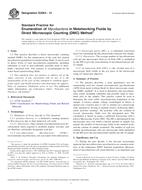
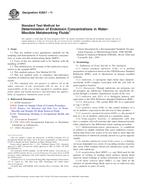 ASTM E2657-11
ASTM E2657-11 ASTM E2800-11
ASTM E2800-11 ASTM E2839-11
ASTM E2839-11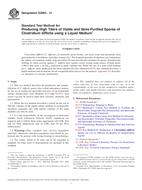 ASTM E2895-13
ASTM E2895-13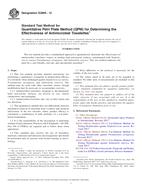 ASTM E2896-12
ASTM E2896-12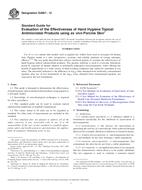 ASTM E2897-12
ASTM E2897-12
 Cookies
Cookies
